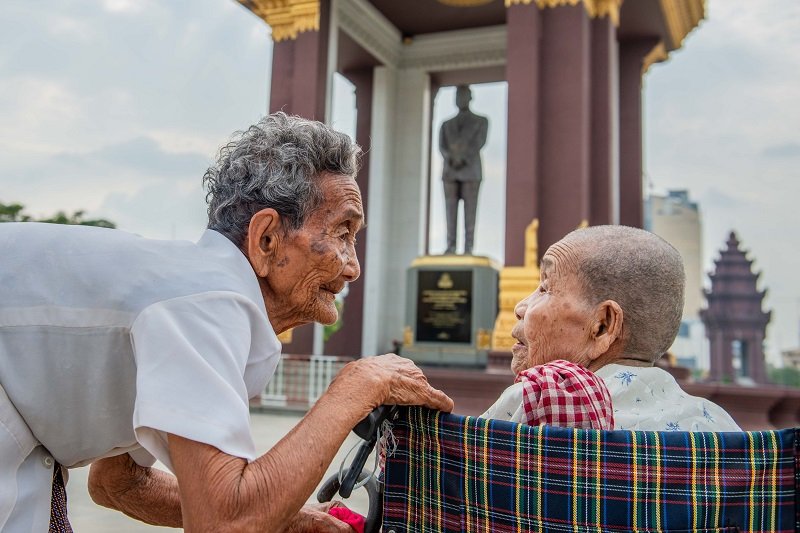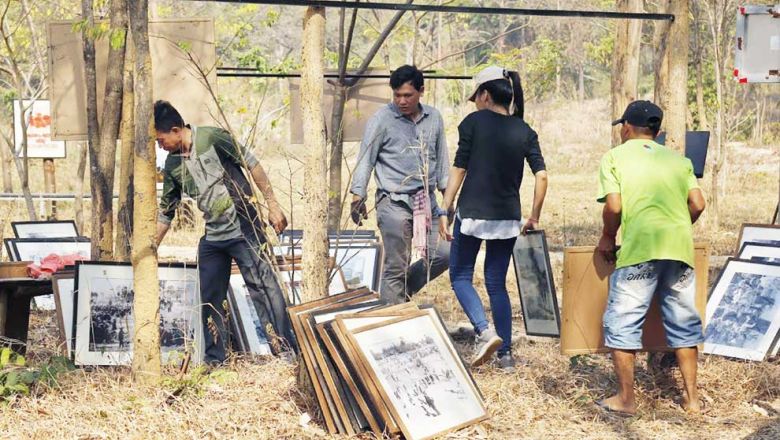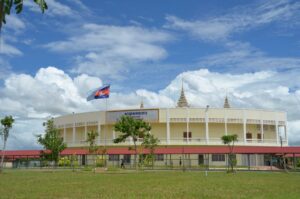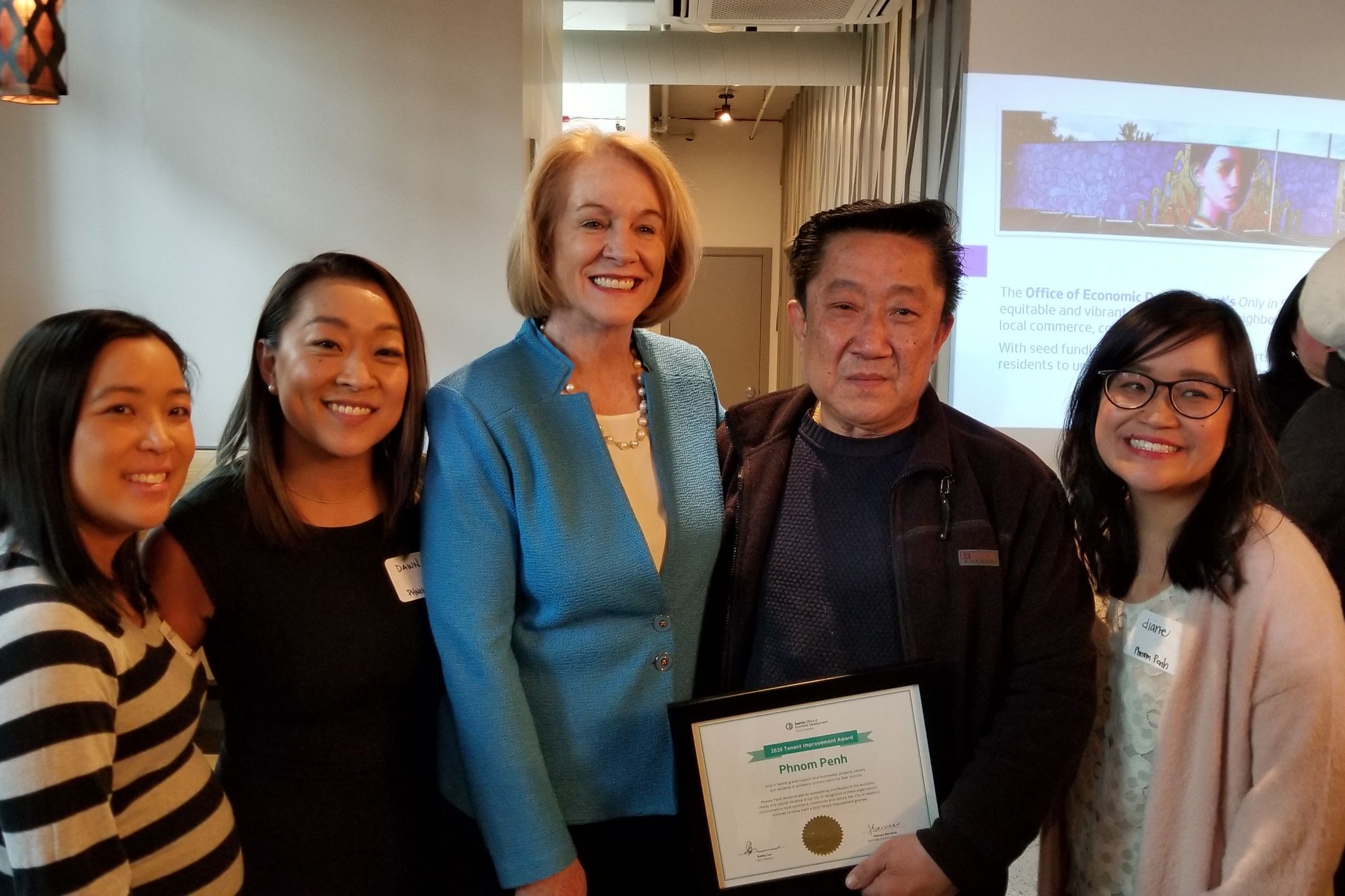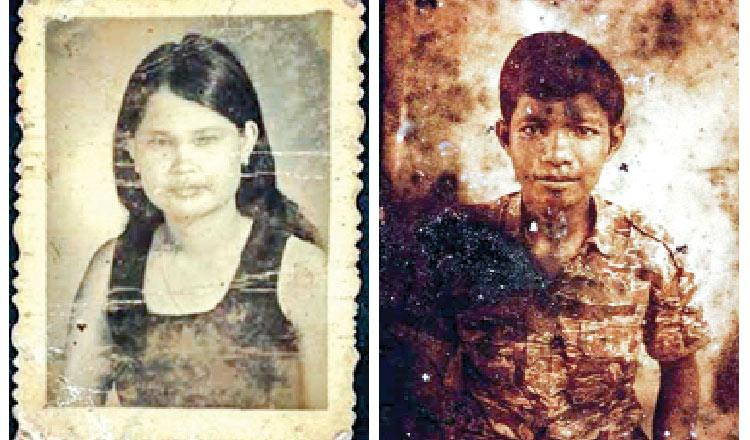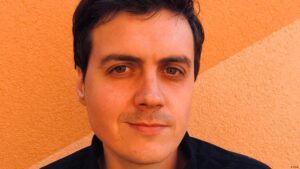Christianity Offers Salvation for Former Khmer Rouge Officers Accused of participating in Cambodian Genocide
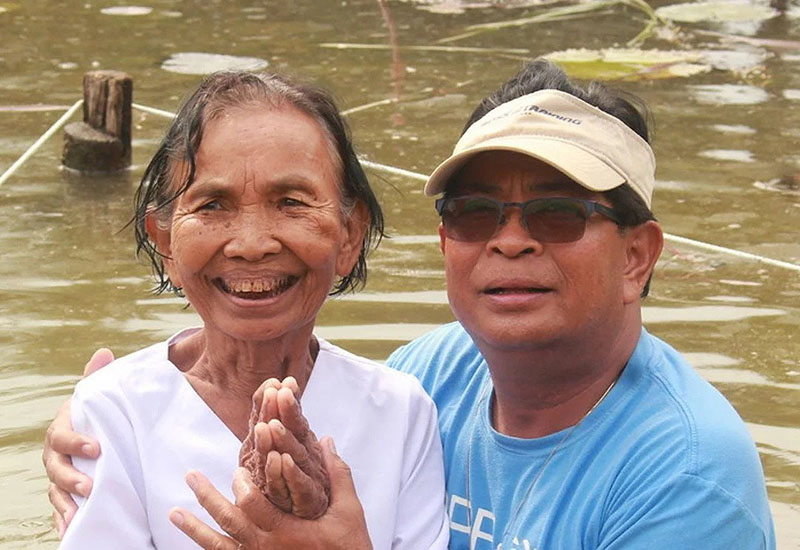 Christianity Offers Salvation for Former Khmer Rouge Officers Accused of participating in Cambodian Genocide
Christianity Offers Salvation for Former Khmer Rouge Officers Accused of participating in Cambodian Genocide
A wiry, shrew-like grandmother clambers out of her hammock, scuttles across her front yard, and breaks into a toothy grin of satisfaction as she shows us around the church she had built less than 15 meters from her home.
Inside the simple wooden building, she raises a claw-like hand and points out rows of recent snapshots showing her leading services of worship, engaging in evangelist work around the region, and emerging from a muddy river with a triumphantly pious smile following her baptism.
It is two years since the twilight-years epiphany of Im Chaem, but few neighbors appear to share the 77-year-old’s missionary zeal in this dusty backwater in far north Cambodia, where most people are devout Buddhists. Only her family and the occasional visiting cleric attend Sunday services at the church she converted from an old rice mill and filled with more red plastic chairs than its spartan congregation could ever hope to use.
Nevertheless, Im Chaem appears steadfast and devout in her new-found faith. Her reasons for pivoting from Buddhism to Christianity are startlingly clear and almost mercenary in their simplicity: she wants redemption before she dies.
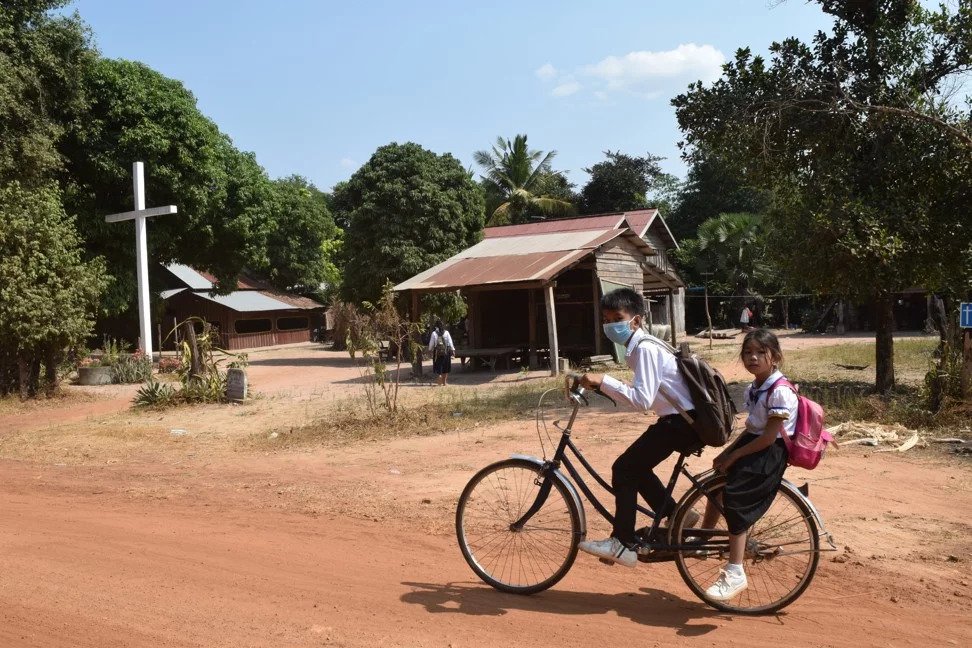
“Jesus can save you if you are a sinner, and that is why I converted to Christianity,” she says. “Only Jesus can redeem you. Only Jesus can wash your sins away.”
When I ask what sins she believes she can be absolved of, Im Chaem waves a dismissive hand and hisses: “Don’t ask me about the past.”
She has every reason to want to forget about the past. Hers is so blood-soaked and immersed in unimaginably dark karma that, had she remained Buddhist, she would have every reason to fear being condemned to endless circles of hell.
She was a senior official under Pol Pot’s brutal Khmer Rouge regime in the 1970s. As a trusted lieutenant of Ta Mok – the notorious Khmer Rouge leader known as the Butcher – she is accused of having been responsible for the deaths of tens of thousands, if not hundreds of thousands of people during the Cambodian genocide.
Together with another official called Yim Tith, Im Chaem is said to have been responsible for a staggering 560,000 deaths. The pair were sent to northwest Cambodia in 1977 to purge traitors in the paranoid regime’s quest to transform Cambodia into a Marxist agrarian utopia. At the peak of the insanity that tore the country apart, leading to up to 2.2 million deaths, Im Chaem was a district secretary and directly controlled Phnom Trayoung prison, where an estimated 40,000 people died. Many of them were executed at night. Others, like those she supervised during the construction of a massive waterworks project and two dams, were worked to death.
Im Chaem has never denied her senior role within Pol Pot’s regime. In a 2012 interview with genocide researcher Dr. Ly Sok-Kheang, she claimed she was chosen to go to the northwest because of her ability to organize workers and supervise rice cultivation, and that she improved workers’ conditions during her time there.
Nevertheless, a 2015 indictment by a United Nations-backed tribunal in Phnom Penh charged her with mass murder, enslavement, and crimes against humanity. It said Im Chaem’s actions led to “thousands of arrests, confinement, and killing of persons” and “thousands of deaths because of starvation, exhaustion, and illness”.

Two years later, the charges were quietly dropped on the grounds that Im Chaem was not a sufficiently senior leader or “one of the most responsible officials of the Khmer Rouge regime”. This put her beyond the jurisdiction of the tribunal, which has been hampered by political interference since it began in 2006.
That controversial decision – seen by many as motivated by the Cambodian government’s fundamental discomfort with the tribunal’s work – has left Im Chaem free to live out her life in peace with her three children and grandchildren in an extended family compound in O’Ang Re village, near Anlong Veng, answerable only to her conscience and her God.
As the youngest of her five grandchildren run home from school in the village of 300 families on an arid, sun-scorched late January lunchtime, Im Chaem will only entertain talk of the present day. She describes how she paid for the church with her own money and has left the land it is built on to the church after she dies.
“My family members are still Buddhists, but everyone is free to choose their own religion,” she says. “I became a Christian to save myself. People who don’t believe in Jesus don’t understand.”
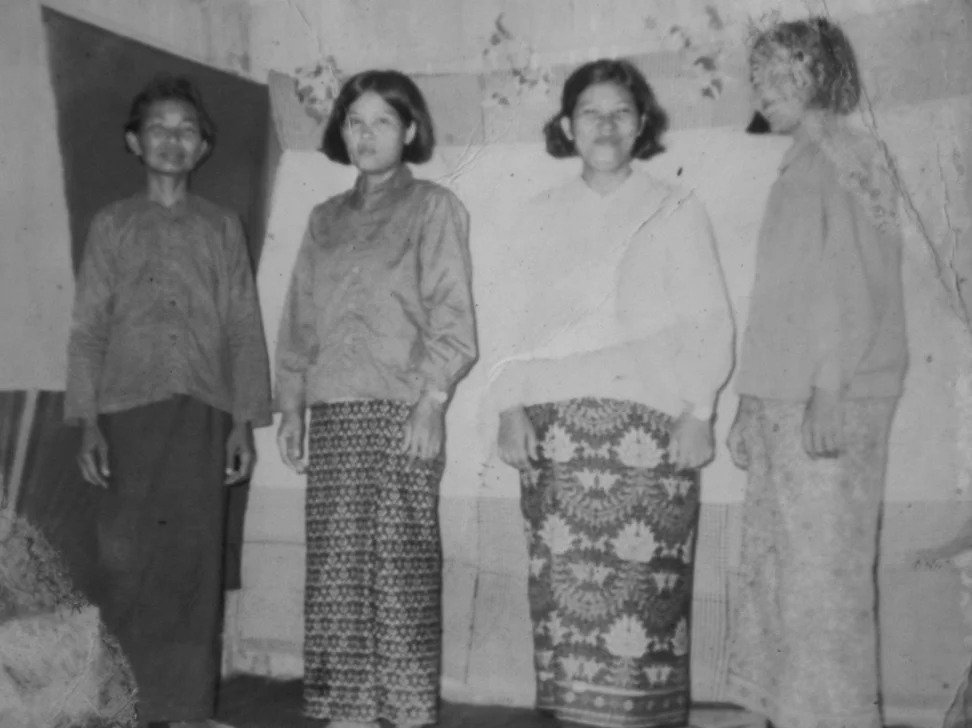
Im Chaem is not the first former Khmer Rouge official to find solace in the Risen Lord. Kaing Guek Eav, known as Duch – the man in charge of the notorious Tuol Sleng prison in Phnom Penh, where thousands of people were interrogated and tortured to death – also converted to Christianity. He announced his faith and pleaded for forgiveness at the 2012 UN-backed tribunal where he was jailed for life for “shocking and heinous” crimes against humanity, torture, and murder.
The dilemma of facing up to the horrific crimes of the Khmer Rouge era as a Buddhist is strikingly illustrated in the 2009 documentary Enemies of the People. In the film, a man who admits killing numerous people, cutting their throats even as they begged for mercy, despairs of the afterlife that awaits him.
“How many holes of hell must I go through before I can be reborn as a human being again?” he asks. “I will never again see sunlight as a human being in this world. That is my understanding of Buddha’s Dharma. I feel desolate.”
Dr. Ly Sok-Kheang, director of the Anlong Veng Peace Centre, run by the Documentation Centre of Cambodia (DC-Cam), which promotes education and memorialization of the Cambodian genocide, says many former Khmer Rouge members had to wrestle with their Buddhist beliefs before becoming atheists in Pol Pot’s Year Zero.
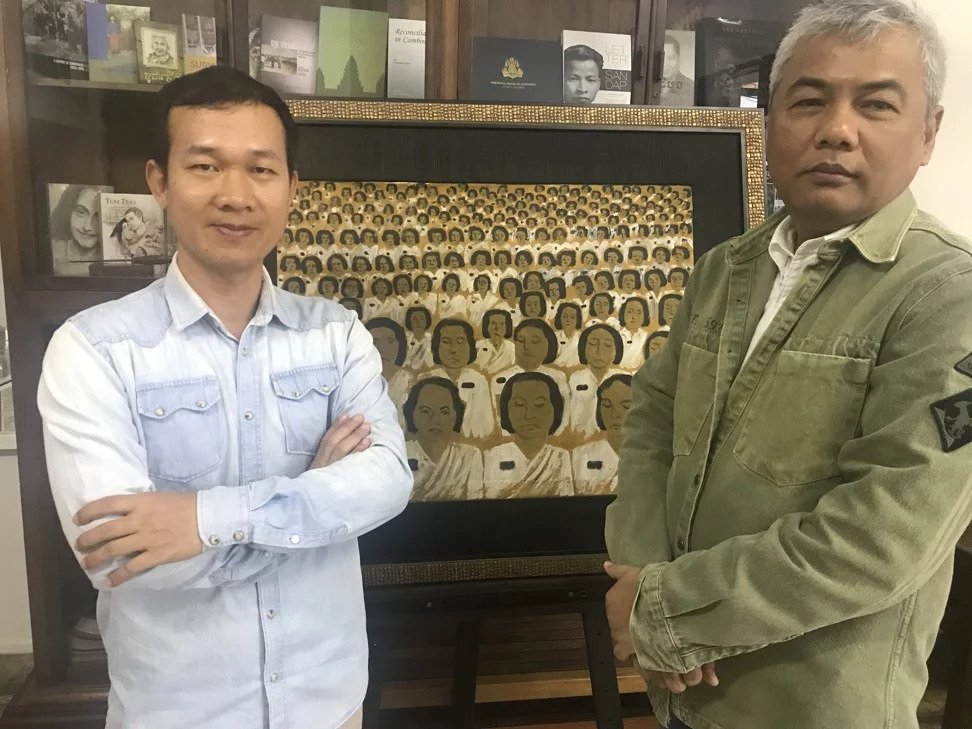
“Under the Khmer Rouge, people were prohibited from practicing any religion and they closed the monasteries and pagodas. So when they allowed religion again, former revolutionaries sometimes felt uneasy to go back to the culture they used to prohibit,” he explains. “That’s why they had to find another religion they felt more comfortable with. In Buddhism, if you commit a bad act you have to face the consequences of that act in Buddhist hell. But with Christianity it is different. It gives people another chance [if they repent].”
DC-Cam’s director, Youk Chhang, was sent from his home in Phnom Penh to work on the dams in the northwest zone under Im Chaem’s control when he was just 14 years old. “Her name was known to everyone. She had a brutal reputation and people just feared her,” he recalls. “People would be made to work all day and all night with no water. People would be killed right in front of you. She was the image of the regime’s brutality.”
Years later, in 1998, Youk Chhang met Im Chaem and – without telling her he had been a slave laborer under her control – spent time with her in her village as he persuaded her to give a talk about Khmer Rouge history.
“I took her on a visit to a temple and she put money in my pocket to buy a candle to make a prayer, like a mother. She wanted to cook for me. I kept my distance and I didn’t accept her food. I saw her as a mother figure but that doesn’t mean she isn’t a criminal,” he says of the surreal encounter.
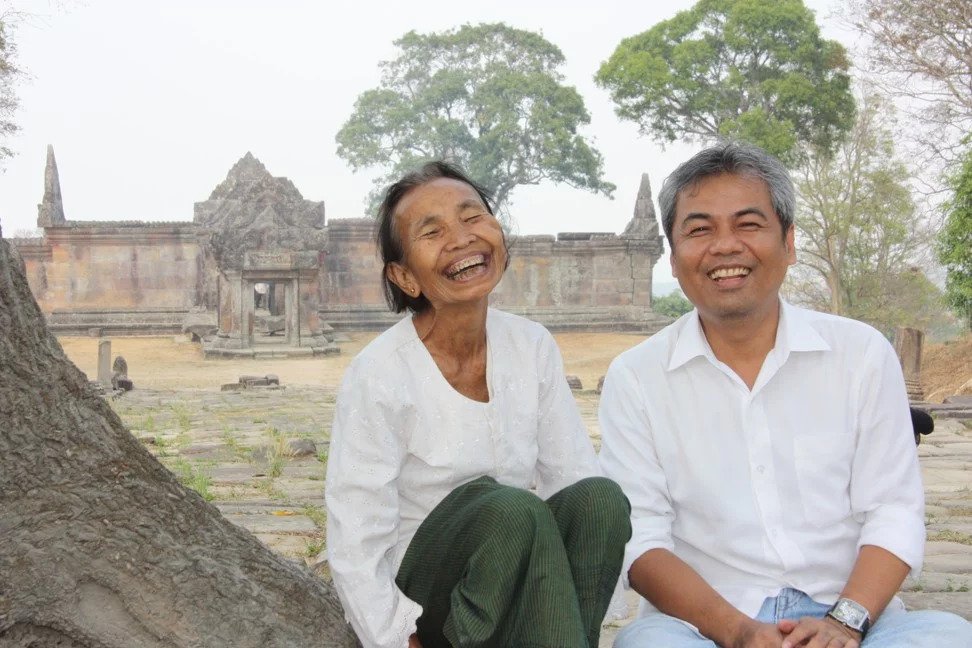
Youk Chhang helped amass the testimony that led to Im Chaem being charged with crimes against humanity. “I fulfilled my responsibility by submitting a case to the court,” he says. “It’s not for me to decide if she is a criminal or not. Justice isn’t always about the verdict. But it was difficult to swallow when the case against her was dropped. It was a difficult thing to accept.”
For outsiders, one of the most extraordinary aspects of the surviving Khmer Rouge officials in Cambodia is the way in which they are able to live freely, apparently without fear of retribution from the people whose families they exterminated.
Im Chaem’s fellow officers in the northwest, Yim Tith, is now in his 80s and living comfortably in a large house in the diplomatic quarter of Phnom Penh. He sold land he owned near the northwest city of Battambang to Hollywood actress Angelina Jolie, who adopted a Cambodian child and runs a charity on the site of his former home.
The apparent immunity of Im Chaem and Yim Tith to either justice or vengeance 40 years after the fall of the Khmer Rouge is the equivalent of finding a German concentration camp commandant living in blissful retirement in Bavaria in the 1980s.
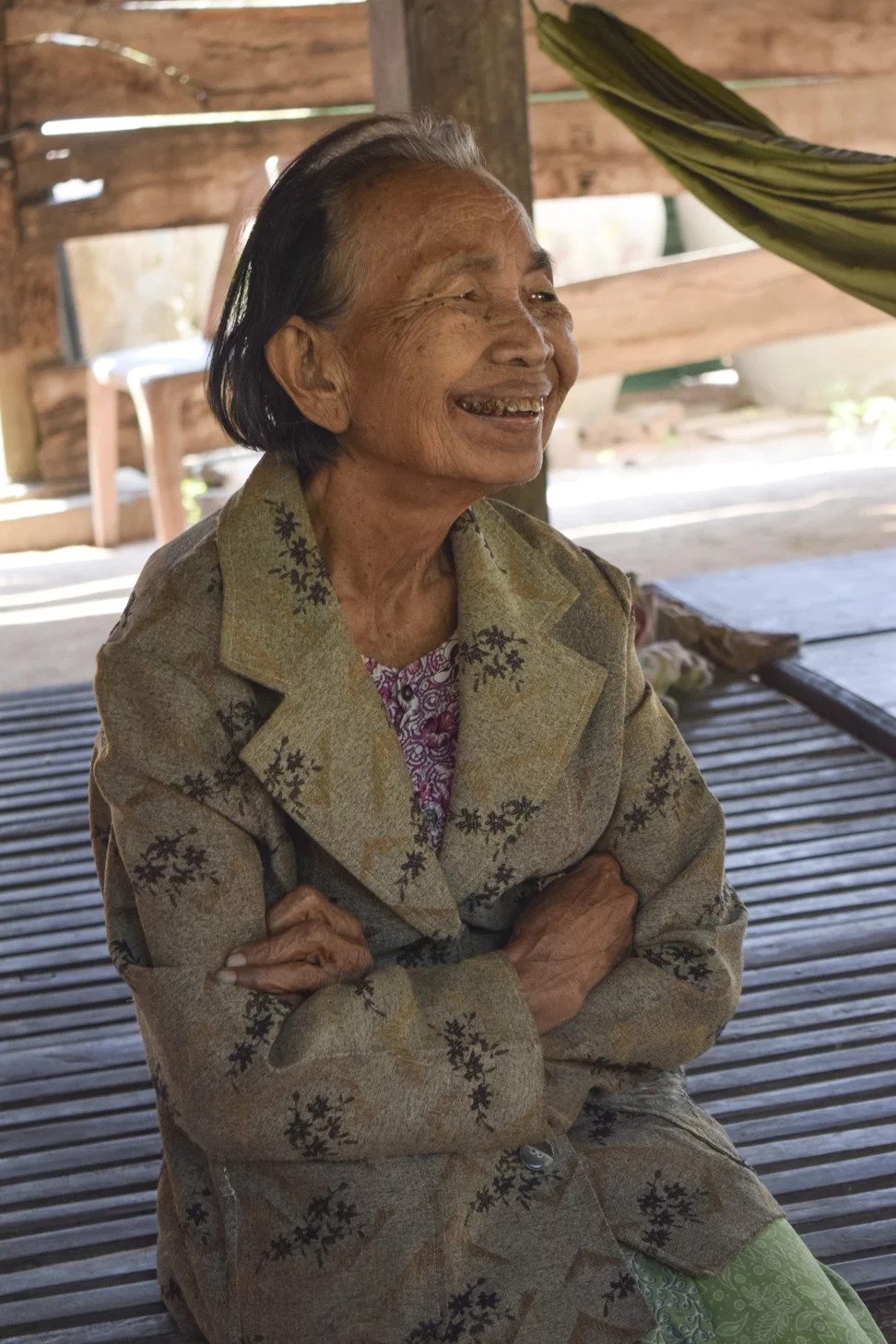
But the history of the Khmer Rouge and its connection to the people of Cambodia is more nuanced and complex than that of Germany’s National Socialists. After being driven from power in 1979, they continued as a guerilla force in northern Cambodia until their downfall, two decades later, and were seen by many people as nationalists who kept the Vietnamese at bay rather than as mass murderers.
Civil society had been smashed to such an extent, first by the forced evacuation of cities and slave labor in the countryside, then by 20 years of bitter civil war, that the perpetrators of the grave crimes of the 1970s were often hard to identify. This profound rupture has left people often unwilling to discuss Cambodia’s dark past and, particularly in the north, ambiguous over whether the Khmer Rouge was a force for good or evil.
“Most of the older people say their country was being occupied by the Vietnamese army and from 1979, they had no choice but to take up weapons with the Khmer Rouge and fight to expel them,” Dr. Ly Sok-Kheang says. “They say they did it for their country and they consider themselves patriots. They are proud of their past. During their time, neighboring countries had no chance to take over our land and territory and they are proud of that. Some of them point out that the Khmer Rouge were good administrators and did good work, except for the killing. They say we had no armed robbery and no drugs under the Khmer Rouge.”
Anlong Veng, the district where Im Chaem lives, was the last stronghold of the Khmer Rouge, and DC-Cam plans to turn it into a hub for educational tourism where the genocide can be memorialized and its lessons preserved for future generations. That process will involve breaking down the resistance of Anlong Veng residents who remain predominantly pro-Khmer Rouge and wary of outsiders.
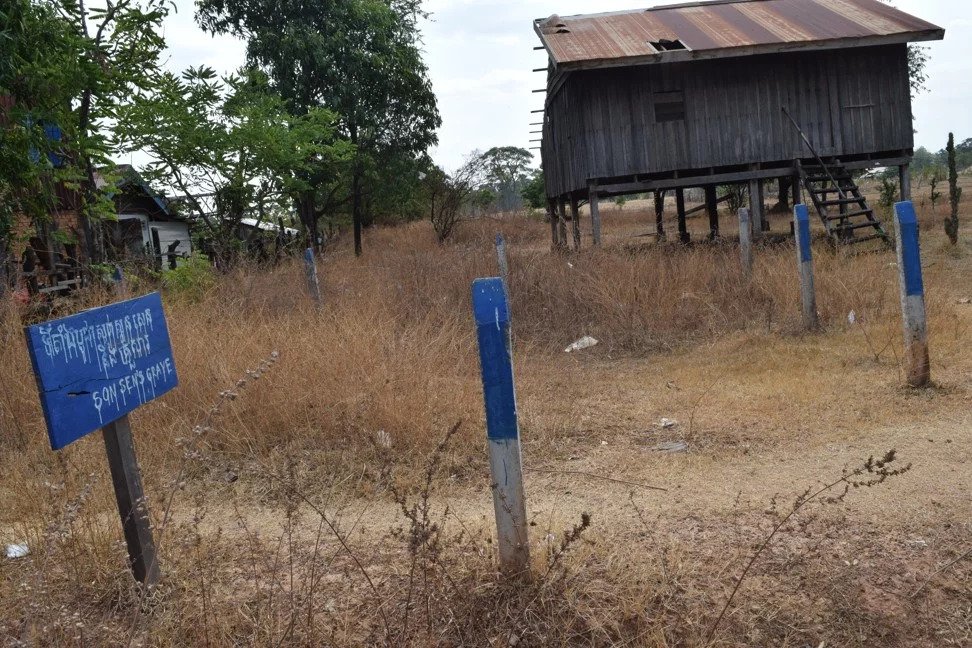
“In one village, the older people told me they were all former revolutionaries and they all served in the same battalion of the Khmer Rouge,” says Dr. Ly Sok-Kheang. “They even prefer to marry their sons and daughters to each other. They are all so closely connected. I have experienced four or five weddings since October involving couples from the same revolutionary groups, marrying from one valley to the next and sometimes in the same village. They want to preserve their identity.”
DC-Cam places a particular emphasis on school visits and talks, teaching children about the history of so-called Democratic Kampuchea from 1975 to 1979. “Many schoolchildren never hear about their country’s history from their own parents,” Dr. Ly Sok-Kheang says. “We try to work with them and encourage them to have an intergenerational dialogue with their parents and neighbors.”
It also wants to put Anlong Veng on the tourist trail and draw visitors from Siem Reap – a two-hour drive away – to visit Khmer Rouge sites such as Pol Pot’s cremation site and the home of Ta Mok, on the Thai border.
Another of Ta Mok’s former homes has been converted into the Anlong Veng Peace Centre and there are plans to build a genocide memorial, similar to the one in Phnom Penh, not far from the home of Im Chaem.
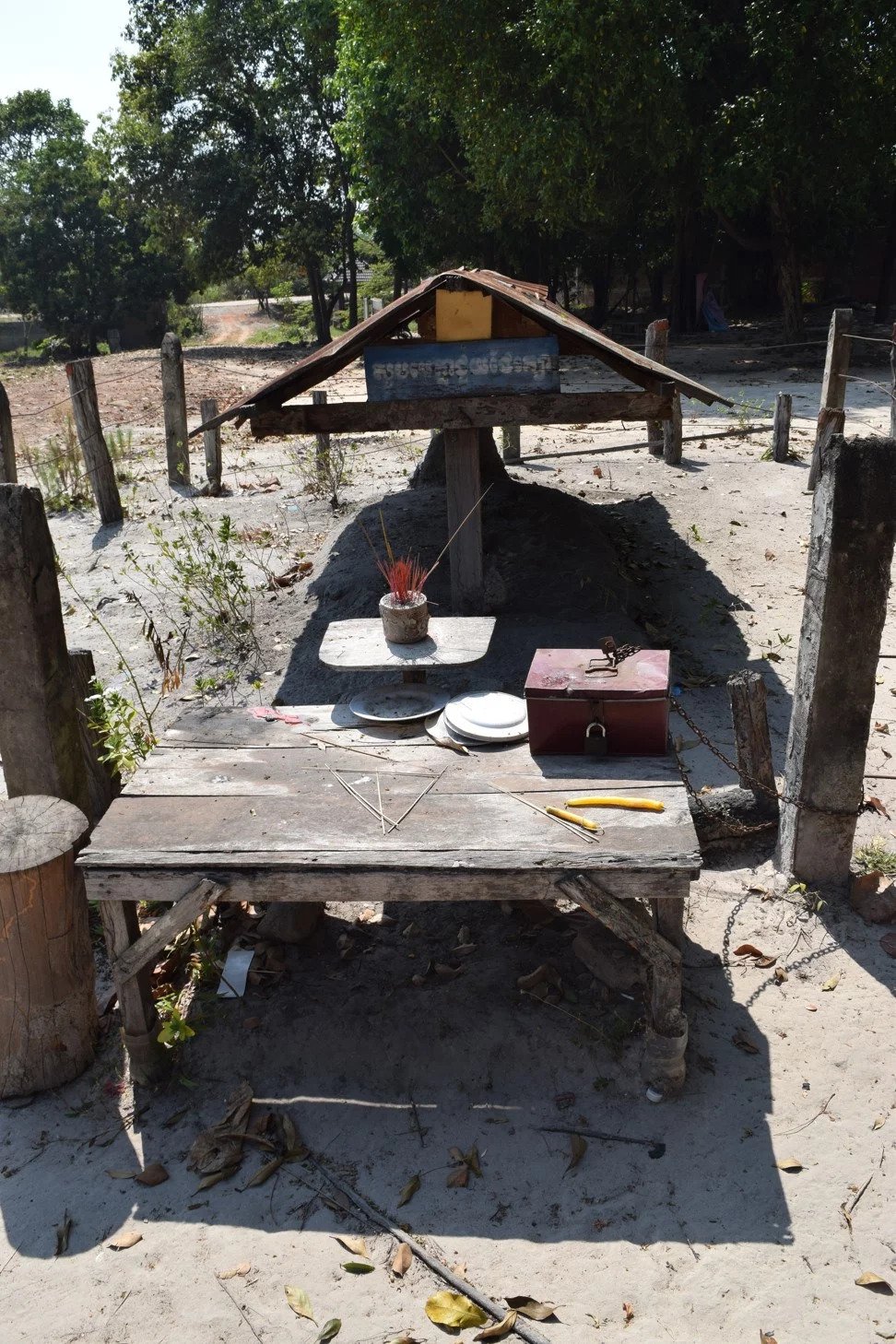
However, a visit to Pol Pot’s cremation site – deserted except for a security guard dozing in a hammock and clearly surprised at having his sleep interrupted – indicates a lot more promotion will be required before there is sufficient demand for tours into Cambodia’s heart of darkness.
Bunsim San, 26, whose parents survived the 1970s genocide and who now works as a communications officer for DC-Cam, says, “We cannot avoid the past. We want to make sure this kind of historical evidence and the physical locations are preserved. That way we can tell the next generation what happened and they will believe us.
“When I was young and I heard stories about those times, it was really hard for me to believe what had happened in my country. I trained to be a reporter, photographer, and videographer and realized I could use these skills to document those stories for the history not only of Cambodia but of humanity. We need to make sure the terrible mistakes leaders made are not forgotten.”
DC-Cam has been interviewing survivors of the genocide since 1995. As the people affected by it grow older, that mission has taken on a sense of urgency. “Many of these people are now in their 60s and 70s. If we leave it much longer, they will have no chance to tell their stories and their experiences and what happened to them will be gone with them,” Bunsim San says.
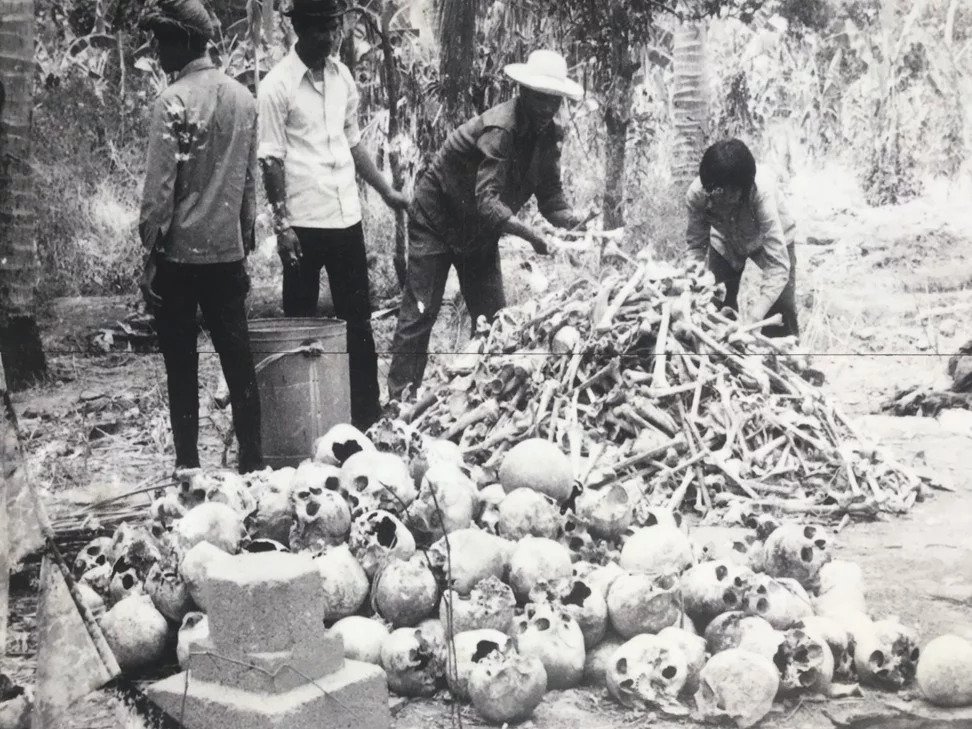
For Im Chaem, however, the past is a firmly closed book, except for her quest for absolution from the sins she committed half a lifetime ago. In a twist, the pastor who baptized her – Christopher LaPel – was himself a slave worker on the dam construction overseen by Im Chaem. He lost his parents, brother and sister in the genocide before he fled as a refugee to the United States. He became a priest in Los Angeles and later set out on a crusade to evangelize back in Cambodia, where he has set up more than 150 churches through the Hope for Cambodia mission.
In the 1990s, he baptized a man named Hang Pin at his mission headquarters in Battambang. Later he discovered Hang Pin was the notorious Khmer Rouge jailer Duch. After Duch was imprisoned, LaPel went to visit and told him: “I love you and I forgive you.”
Later, at Duch’s trial, LaPel testified about the power of Christ to lead a person to repentance and God’s grace. On his website, LaPel describes how he replaced the worn-out Bible Duch took with him to his cell. Duch is now 77 and will never be released.
LaPel baptized Im Chaem along with 20 other people in Battambang in January 2018. By email, he says she has “shared Jesus’ love” and testifies about her new life with former Khmer Rouge comrades in the area.
LaPel’s extraordinary gestures of love and forgiveness towards members of the ruthless regime that wiped out his own family appear to offer hope that salvation is ultimately within reach of sinners such as Duch and Im Chaem.
As she swings wistfully in her hammock with her grandchildren running happily around the family compound, the sanctuary of her own church a few short steps away, Im Chaem may be fervently praying that the pastor’s faith in the power of redemption is not misplaced.
For victims of Cambodia’s genocide, justice is a long time coming
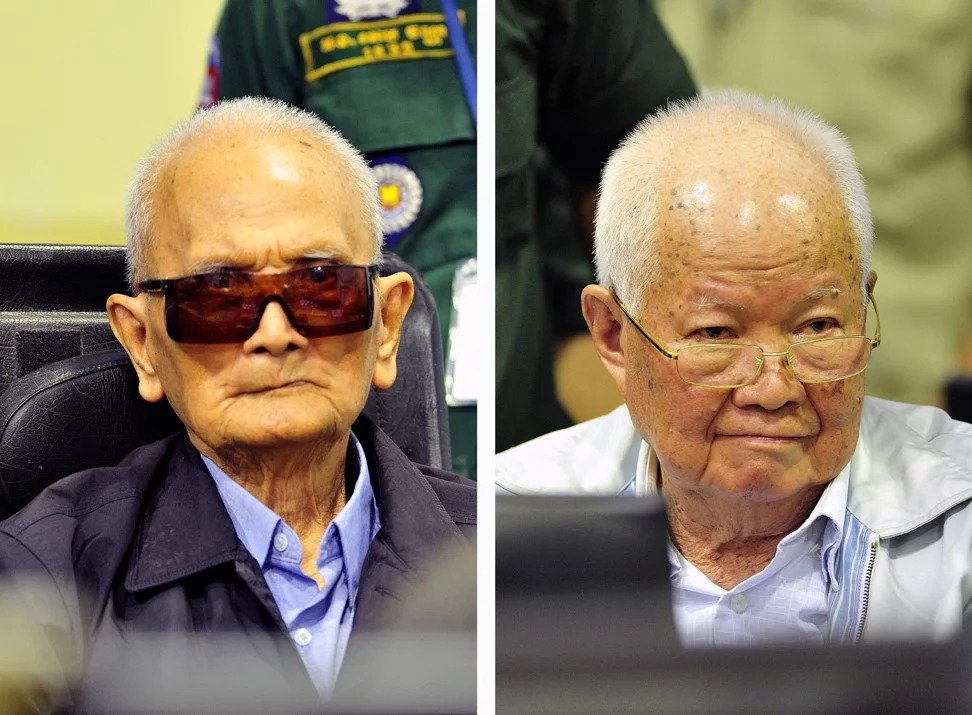
Justice for the victims of the Cambodian genocide has been painfully slow and jaw-droppingly expensive. The genocide trials that began in 2006 have so far cost the United Nations and international donors more than US$300 million and led to the conviction of only three top officials of the Khmer Rouge. The Extraordinary Chambers in the Courts of Cambodia (ECCC), in Phnom Penh, aim to try the Khmer Rouge members most responsible for violations of international law and crimes against humanity during the Pol Pot era, from 1975-79.
Up to 2.2 million people died during the three years, eight months and 20 days of the Khmer Rouge regime as Pol Pot – known as Brother Number One – pursued a demented mission to transform the country into an agrarian Marxist utopia. The regime’s chief jailer, Kaing Guek Eav, or Duch, was the first to be convicted. In July 2010 he was jailed for life for crimes against humanity and grave breaches of the Geneva Convention.
Pol Pot’s right-hand man, Nuon Chea, was jailed for life in 2014 for crimes against humanity and in 2018 was found guilty of separate charges of genocide against Vietnamese and minority groups. He died in prison in August 2019. Pol Pot’s head of state, Khieu Samphan, was jailed for life in 2014 for crimes against humanity and, in 2019, was found guilty of separate charges of genocide.
Another senior official, Ieng Sary, was arrested in 2007 and accused of crimes against humanity and genocide but died in March 2013 before his trial was concluded. His wife, Ieng Thirith, sister-in-law of Pol Pot and his minister of social affairs, was accused of crimes against humanity and genocide but was ruled mentally unfit to stand trial in 2011 because she had Alzheimer’s disease. She died in August 2015.
The Cambodian government has prevented the tribunal from bringing to trial anyone other than the most senior Khmer Rouge officials. These were the grounds for not proceeding against Im Chaem.
Prime Minister Hun Sen is a former Khmer Rouge soldier himself and has repeatedly claimed further trials would risk further civil strife. Many other former Khmer Rouge functionaries went on to serve in the army or regional governments in Cambodia when they were reintegrated into society in the 1990s.
South China Morning Post

